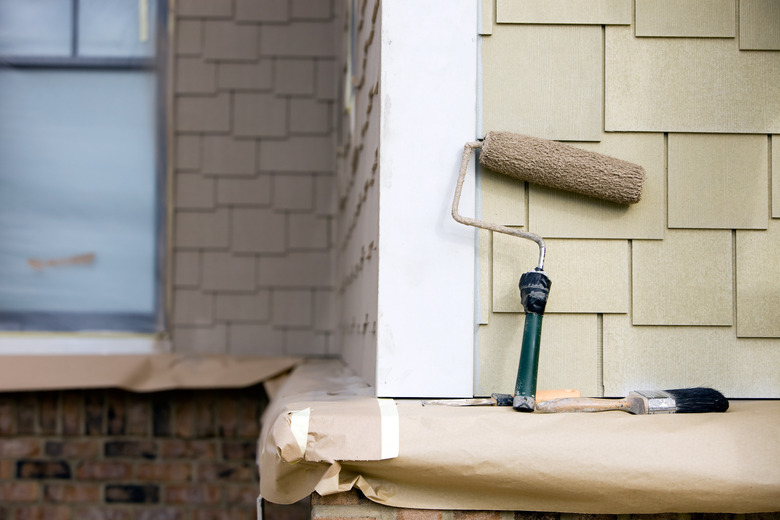Alternatives To TSP For Cleaning The Walls Before Painting
Where others failed, this serious cleaner swept in with a vengeance to clean walls before painting. DIYers have used trisodium phosphate, or TSP, to clean and get rid of the most problematic stains on a multitude of surfaces. While it was a go-to cleaner for decades, it became a worrisome cleaner for those who care about the environment or had sensitive skin and respiratory issues. There are a few ways to get the benefits of TSP without the negative environmental effects of this versatile cleaner.
What Is TSP Cleaner?
It has long been considered the best choice for truly tough cleaning jobs. TSP safely takes out the most difficult stains on a wide variety of surfaces and substances. From stone to wood, TSP was a preferred cleaner.
It is so strong that it can strip paint while it whisks away caked on dirt and grease. However, TSP has taken a back seat to substitutes that aren't as potent or are less likely to pose possible dangers to someone's health or the environment.
It is made of trisodium phosphate, which can stain wood, damage the aesthetic of metal fixtures and leave a film on glass.
Cleaning Power of TSP
Generally, TSP is used to clean decks, siding and outdoor areas before painting. It easily and quickly removes grime, layers of blackened soot, chalked paint, caked dirt and puddles of grease. The cleaning formula was specially made to be used on washable surfaces in and around the home.
TSP has a formula made specifically to control lead paint dust. It can be used on a wide variety of materials, including:
- Brick
- Stone
- Cement
- Wood
What Are the Dangers of TSP?
The phosphate in TSP is what has been the biggest problem for users and environmentalists. An environmental movement in the 1970s limited the use of phosphates to protect fresh water lakes, rivers and streams. Phosphate would run off of the deck that you were cleaning and into the waterways, causing phosphate-loving algae to flourish and kill off fish and plants.
TSP can be irritating and cause redness on sensitive skin. The main issue, however, is its damage to the environment.
TSP can be corrosive to a few materials, including:
- Metal
- Ceramic tile
- Grout
- Glass
TSP to Remove Paint
If you are attempting to strip paint from wood, brick or stone, TSP will do a fantastic job. Always wear full-sleeve clothing when working with TSP or it can easily irritate skin with the slightest bit of contact. Use gloves, wrap-around glasses and a well-made respiratory mask before using TSP on approved surfaces.
Trisodium Phosphate Substitute
There are a number of TSP substitutes on the market. These commercial cleaners work well in place of TSP but can also contain chemicals.
If you are looking for a more natural trisodium phosphate substitute, borax can be a fine replacement. It doesn't require all the safety measures of TSP and is inexpensive, easy to use and it won't hurt the environment. Borax can kill fungus and strip away dirt and grease on porous surfaces such as wood and cement.
Recipes for a TSP Substitute
Cleaning walls before painting doesn't always require a chemical cleaner. Homemade cleaners work just as well.
Borax – Use a gallon of lukewarm water with a tablespoon of borax. Stir with a nonreactive pole, such as a long yardstick or paint stirrer.
Acetone – Acetone in a spray bottle spritzed directly on a painted wood surface can make the paint bubble and lift from the wood or brick surface.
TSP Safety Measures
TSP cleaner requires precautions when using it, which is why many people turn to a substitute. If you have sensitivities to strong aromas or chemical allergies, you may want to use a trisodium substitute instead.
